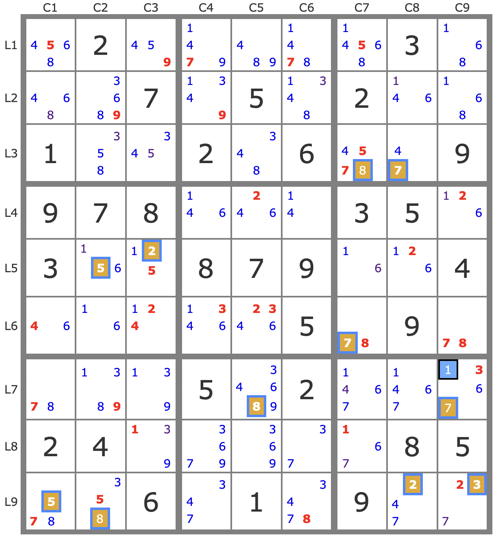Mauriès Robert wrote:You write earlier in this thread:
For a puzzle with a single solution, this has the unfortunate consequence that any track is:
- either the set of all the candidates (inconsistent puzzle);
- or the set of all the candidates that are true in the solution.
So you agree that an invalid track can contain two candidates from the same cell, which to me is normal.
Note that, at this point, we were talking of tracks based on a single candidate.
It's cristal clear: an invalid track can exist only when the puzzle is invalid or (I missed this case, and you don't even notice it) when it starts from a false candidate).
But all this has no bearing on the independent topic of tracks based on several candidates. You're deliberately mixing everything.
Mauriès Robert wrote:If so, it is easy to construct an example that contradicts the following statement in the proof that Th. 2-1 is false:
One of the candidates A, B, C... is in P(A B C...) iff this candidate is a consequence in TR (TB) of each of the other ones separately.
This is obviously impossible (unless the puzzle is contradictory) when E is a subset of an undecided 2D-cell ("entity" in Robert's vocabulary).
It seems to me that your statement is only correct for valid tracks.
There are two statements. Are you challenging the first?
The second one explicit excludes invalid puzzles.
Out of charity, I will not comment your "example".
Once more, are you unable to understand my elementary proof, based only on your definitions and elementary Boolean algebra, not only that your proof of theorem 2.1 is false, but that the theorem itself is false?


